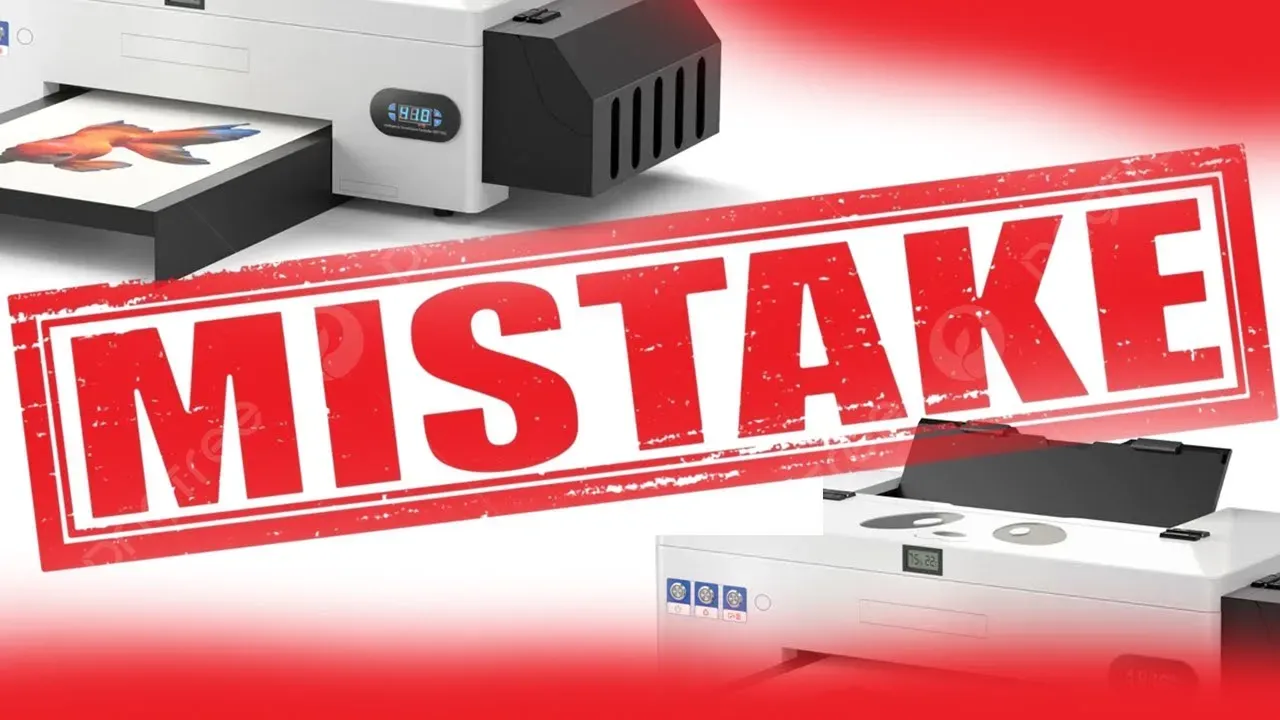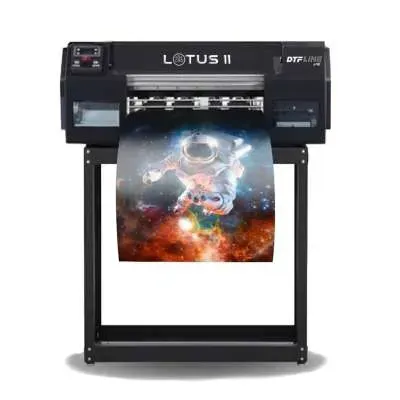DTF printing mistakes can significantly affect the quality of your prints, leading to disappointing results that can hinder your business or creative projects. Understanding these common missteps is crucial for anyone looking to excel in this innovative printing process. From improper heat settings to poor adhesive powder coverage, avoiding DTF printing errors is essential for achieving vibrant and durable designs. This article will dive into the pitfalls of DTF printing and provide practical tips for improving DTF prints. With the right knowledge and DTF printing solutions, you can enhance your printing quality and produce stunning visuals with confidence.
When it comes to direct-to-film printing, knowing how to navigate the intricacies is vital for success. The journey from design to print can be fraught with challenges, but understanding the nuances can prevent costly mistakes. Whether it’s ensuring optimal conditions for adhesion or fine-tuning the printer settings, being proactive about potential pitfalls can transform your DTF printing experience. This guide will explore essential strategies and printing tips to help you sidestep common errors, allowing you to create crisp, resilient transfers that truly stand out. By focusing on quality and precision, you can master the art of this versatile printing method.
Understanding Common DTF Printing Mistakes
When it comes to DTF printing, understanding common mistakes is the first step towards achieving successful outcomes. Many beginners are unaware of issues such as insufficient powder coverage or incorrect heat settings, which can severely impact the quality of the final print. Insufficient powder coverage, for instance, is a common mistake that leads to poor adhesion, making designs susceptible to peeling over time. Similarly, neglecting to adjust heat settings can result in under-curing or over-curing of prints, both of which can compromise the integrity of the design.
Another major consideration is the quality of prints, which can be severely impacted by the materials used in DTF printing. Utilizing low-quality films or inks leads to faded colors and a disappointing overall look. By recognizing these common pitfalls, printmakers can develop a clearer strategy to avoid mistakes and achieve better print quality. Engaging in research and investing time in understanding the nuances of DTF printing will go a long way toward preventing these errors.
Key DTF Printing Solutions for Quality Enhancement
To improve DTF printing quality, several solutions can be put into practice. One of the most effective strategies is to ensure proper powder application on films, which is essential for achieving the right level of adhesion. It’s recommended to perform a test print early in the process to adjust the amount of powder used. A consistent thickness of around 100 microns often leads to desirable results, allowing for a reliable bond between the design and substrate.
Another critical solution lies in adhering to recommended heat settings provided by manufacturers. Setting the heat press to the correct temperature ensures that prints are cured properly, maximizing durability and vibrancy. It’s beneficial to conduct periodic tests to fine-tune these settings based on the substrate type and environmental conditions, thus further improving the overall quality of DTF prints.
Important DTF Printing Tips for Beginners
For those new to DTF printing, applying certain tips can significantly streamline the learning process. Firstly, one of the most important practices is maintaining adequate printer maintenance—neglecting this can lead to technical complications like clogged nozzles, which in turn affects the print quality. Regularly cleaning print heads and performing maintenance checks ensures a smooth workflow and minimizes the risk of producing subpar prints.
Additionally, beginners should not overlook the importance of the printing environment. Environmental factors like humidity and temperature can drastically affect print adhesion and quality. It is ideal to create a controlled environment where temperature and humidity are monitored regularly. Following these tips will help beginners avoid common DTF printing errors and elevate their printing skills over time.
The Impact of Printer Maintenance on DTF Quality
Regular printer maintenance is crucial in ensuring consistent DTF printing quality. Ignoring basic upkeep, such as cleaning print heads and replacing inks timely, often leads to numerous quality issues such as streaks or missing colors in prints. Moreover, performing routine checks helps identify potential problems before they escalate, thus enhancing the overall longevity of the printer.
Failing to maintain printers not only hampers productivity but can also increase material wastage, which effectively undermines profitability. Developing a maintenance schedule that includes thorough cleaning and calibration can yield high-quality prints while keeping operational costs low. This proactive approach in printer maintenance can save time, resources, and improve the final DTF product.
Environmental Factors and Their Effect on DTF Printing
The environment in which DTF printing takes place plays a significant role in the overall quality of the output. Factors such as humidity, dust, and ambient temperature can heavily influence the adhesion of prints to substrates and can lead to uneven results. For instance, excessive humidity may cause adhesive powders to clump, while ideal temperatures help ensure that curing processes are efficient and effective.
To mitigate issues caused by environmental variables, printmakers are encouraged to establish dedicated printing spaces where climate conditions can be regulated. Monitoring relative humidity levels and maintaining ideal temperatures around 20-25°C (68-77°F) is essential for producing quality prints. By controlling external factors, printmakers can greatly enhance their DTF printing outcomes, reducing the likelihood of mistakes.
Performing Test Prints: A Crucial Step in DTF Production
Performing test prints is among the most effective strategies for avoiding common DTF printing mistakes. This crucial step allows you to verify settings such as powder application, heat, and alignment before committing to larger productions. Skipping this step can lead to wasted materials and time, especially when unexpected errors occur during mass production. By taking a systematic approach to test prints, you can identify flaws early and make necessary adjustments.
In addition to helping spot issues, test prints serve as valuable learning experiences. They provide insights on how various factors affect print quality and allow for optimization of the printing process. Facilities that prioritize test prints often experience superior final results and can maintain higher quality standards overall. Therefore, integrating this practice into your workflow will undoubtedly lead to improvements in both the quality and efficiency of DTF printing.
Frequently Asked Questions
What are some common DTF printing mistakes I should know about?
Common DTF printing mistakes include insufficient powder coverage, incorrect heat settings, using poor quality transfers, inadequate printer maintenance, and ignoring the print environment. Each of these issues can significantly impact your DTF printing quality and the overall success of your projects.
How can I avoid DTF printing errors related to insufficient powder coverage?
To avoid DTF printing errors regarding powder coverage, ensure you apply a consistent and adequate amount of adhesive powder, aiming for a thickness of around 100 microns. Adjust your application process based on initial test prints to perfect the coverage.
What are the best DTF printing solutions for incorrect heat settings?
To achieve the best DTF printing solutions for heat settings, always follow the manufacturer’s recommendations, which typically suggest a heat press temperature of 160-180°C (320-356°F) for 10-20 seconds. Conduct preliminary tests to tailor these settings for specific substrates.
How do I improve DTF prints by using high-quality materials?
Improving DTF prints begins with using high-quality DTF films and inks. Invest in reputable brands that ensure vibrant colors and durability. Testing various products can help you find the best combination for outstanding print quality.
What DTF printing tips can help prevent misalignment during transfer application?
To prevent misalignment in DTF printing, use alignment tools and jig setups for accurate transfer placement. Proper setup ensures even application of the print, enhancing the final product’s visual appeal and professionalism.
Why is it important to perform test prints in DTF printing?
Performing test prints is crucial in DTF printing to catch any inconsistencies before mass production. This step allows you to fine-tune your settings based on verified results, saving both time and materials while ensuring high-quality outcomes.
| Common DTF Printing Mistakes | Solution |
|---|---|
| 1. Insufficient Powder Coverage | Ensure consistent and adequate powder coverage, around 100 microns. |
| 2. Incorrect Heat Settings | Follow the manufacturer’s guidelines: usually 160-180°C for 10-20 seconds. |
| 3. Poor Quality Transfers | Invest in high-quality DTF films and inks to achieve vibrant results. |
| 4. Inadequate Printer Maintenance | Regularly clean printer heads and perform maintenance checks. |
| 5. Ignoring the Print Environment | Maintain 40-60% humidity and 20-25°C temperature during printing. |
| 6. Not Performing Test Prints | Always conduct test prints before mass production to check settings. |
| 7. Misalignment Issues | Use alignment tools to ensure accurate placement of designs. |
Summary
DTF printing mistakes can severely impact the quality of your designs, but recognizing and addressing them is essential for success. To achieve stunning results, be mindful of issues such as insufficient powder coverage, incorrect heat settings, and inadequate printer maintenance. By implementing expert solutions and continually refining your technique, you can enhance the quality of your prints and avoid common pitfalls associated with DTF printing. Engaging with community resources and sharing experiences will also allow for continuous improvement and mastery in this dynamic field.







